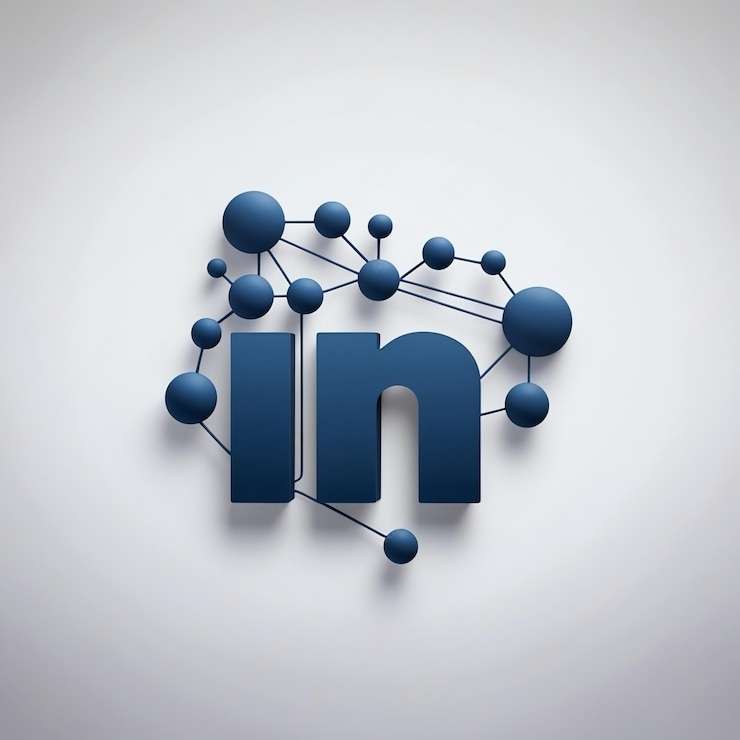Networking is no longer about just connecting; it’s about strategically building and nurturing relationships that can translate into high-paying clients and long-term partnerships.

In this comprehensive guide, we’ll explore how to leverage LinkedIn networking for client acquisition, providing you with the best practices, strategies, and insider tips you need to succeed. By the end of this article, you’ll know how to identify high-value clients, create meaningful connections, and nurture relationships to drive business growth.
1. Identifying Potential High-Paying Clients in Your LinkedIn Network
The key to successful client acquisition is understanding who your potential high-paying clients are. LinkedIn offers various tools and strategies to help you filter through your network to find the right prospects.
Steps to Identify High-Paying Clients:
- LinkedIn Search Filters: Use the advanced search filters to narrow down your results based on industry, job title, company size, and location. High-paying clients often come from industries with larger budgets.
- Job Titles to Target: Focus on decision-makers such as CEOs, CFOs, marketing directors, and business development managers. These individuals often have the budget and authority to engage your services.
- Engagement Clues: Look at the type of content your connections engage with. High-paying clients are often active on LinkedIn, sharing industry insights, and commenting on posts relevant to their business needs.
2. Building and Maintaining Relationships with Key LinkedIn Connections
Networking isn’t about collecting contacts; it’s about creating relationships. The real power of LinkedIn lies in fostering meaningful interactions with your connections.
Relationship Building Tips:
- Personalized Messages: Always send a personalized message when connecting. Reference a post they shared or mention a mutual interest.
- Regular Engagement: Don’t let the relationship go cold after connecting. Engage with their posts regularly—comment, like, or share insightful feedback. It keeps you on their radar without being intrusive.
- Offer Value: Share content that provides real value. Whether it’s industry news or a useful resource, offering helpful information builds trust.
3. Best Practices for Sending Connection Requests to High-Paying Clients
Your connection request is your first impression, and you want to make it count—especially when reaching out to high-paying clients.
How to Craft the Perfect Connection Request:
- Personalization is Key: Mention something specific about their profile—whether it’s a mutual connection, their recent post, or their company’s latest achievement.
- Explain the Purpose: Be clear about why you want to connect. Is it to share insights, collaborate, or simply to expand your network? Avoid being too salesy upfront.
- Keep it Short and Professional: LinkedIn users are busy professionals. Keep your message concise and respectful of their time.

4. How to Network with Industry Leaders on LinkedIn
Connecting with industry leaders can open doors to high-value opportunities. However, these individuals often have busy schedules and numerous connection requests.
Steps to Network with Industry Leaders:
- Engage Before Connecting: Comment on their posts, share their articles, and offer meaningful insights. This way, when you send your connection request, they’re already familiar with your name.
- Join Industry Groups: Many industry leaders are active in LinkedIn groups. Participate in discussions and establish yourself as an expert in the field.
- Send a Value-Driven Message: When reaching out, offer something of value. Perhaps share a relevant resource or insight that ties back to a recent post or discussion they were involved in.
5. Using LinkedIn Endorsements to Strengthen Network Ties
Endorsements are a simple yet effective way to strengthen your LinkedIn network. While they might seem like a minor feature, they can actually serve as social proof of your expertise.
How to Use Endorsements Effectively:
- Endorse Connections for Relevant Skills: Don’t endorse someone for skills that don’t match their expertise. Instead, focus on the skills that are most relevant to their profession.
- Ask for Endorsements: Don’t be afraid to ask your connections to endorse your skills. In return, offer to endorse their skills, but ensure it’s a genuine exchange.
- Use Endorsements as Icebreakers: If you’re looking to reignite a dormant connection, endorsing someone for their skills can be a great conversation starter.
6. Effective Follow-Up Strategies on LinkedIn for Client Acquisition
Following up is crucial for turning initial LinkedIn connections into clients. But there’s a fine line between being persistent and being pushy.
Follow-Up Tips:
- Time Your Follow-Ups: Wait about a week after the initial connection before sending a follow-up message. This gives the person time to check out your profile and possibly engage with your content.
- Be Helpful, Not Salesy: Your follow-up message should not be a sales pitch. Instead, offer value, such as sharing a relevant article or inviting them to a virtual event.
- Keep It Conversational: Following up doesn’t need to be formal. A casual, conversational tone is often more effective in building a rapport.
7. How to Use LinkedIn’s ‘People You May Know’ Feature for Networking
LinkedIn’s “People You May Know” feature is a goldmine for expanding your network with high-value connections.
Best Practices for Using This Feature:
- Focus on Mutual Connections: Look for people who share multiple mutual connections. This gives you common ground to start a conversation.
- Review Their Profile First: Before sending a connection request, review their profile to understand their role and industry. This will help you craft a personalized message.
- Send Connection Requests Strategically: Don’t spam connection requests. Be selective and aim for quality over quantity.
8. Engaging with LinkedIn Connections Through Comments and Likes
Engagement is a powerful tool on LinkedIn. It’s not enough to simply be a passive observer—you need to actively engage with your connections.
How to Engage Effectively:
- Leave Thoughtful Comments: Instead of just liking a post, leave a comment that adds value to the discussion. This not only builds rapport but also showcases your expertise.
- Share Content: Sharing your connections’ posts is another great way to strengthen relationships. Add your own insights to spark further conversation.
- Be Consistent: Regular engagement is key to staying top-of-mind with your connections.
9. Building a Network of Decision-Makers on LinkedIn
Decision-makers are the key to client acquisition on LinkedIn. These are the people who have the authority to hire or contract your services.
How to Build a Network of Decision-Makers:
- Use LinkedIn’s Advanced Search: Filter by job titles such as CEO, COO, CMO, and Director. These roles are typically responsible for making high-level business decisions.
- Join Industry-Specific Groups: Decision-makers often participate in groups related to their industry. Engage in group discussions and offer valuable insights.
- Attend LinkedIn Events: Virtual events hosted on LinkedIn are a great way to meet decision-makers in your field. Engage with them during and after the event.
10. The Power of Mutual Connections on LinkedIn
Mutual connections are powerful because they create an immediate sense of trust and familiarity.
How to Leverage Mutual Connections:
- Use Them as Icebreakers: When sending a connection request, mention your mutual connection to establish common ground.
- Request Introductions: If you have a strong relationship with a mutual connection, don’t hesitate to ask for an introduction. This can significantly increase your chances of connecting with high-value clients.
- Engage with Mutual Connections’ Content: Liking, commenting, and sharing content from your mutual connections can keep you visible to their network.
11. Networking with LinkedIn Influencers to Expand Your Reach
LinkedIn influencers have large followings and can significantly amplify your visibility when you connect with them. Their endorsement or engagement with your content can put you in front of a broader audience, which could include high-paying clients.
Strategies for Networking with Influencers:
- Engage with Their Content: Start by consistently engaging with their posts—leave thoughtful comments, share their content, and even reference their insights in your posts.
- Create Value for the Influencer: Networking with influencers is not just about what you can gain. Offer them value in the form of unique insights, collaborations, or sharing their work with your audience.
- Leverage Shared Connections: If you have a mutual connection with an influencer, ask for an introduction or use it as a conversation starter when you send a connection request.
Networking with influencers requires persistence and offering genuine value, but the payoff can be immense in terms of visibility and credibility.
12. How to Create a Networking Strategy on LinkedIn
Without a clear strategy, networking on LinkedIn can feel like wandering in the dark. A well-thought-out networking strategy ensures that every connection you make is purposeful and adds value to your business goals.
Steps to Develop a LinkedIn Networking Strategy:
- Define Your Target Audience: Be clear about the type of clients you want to attract. Are you looking for startups, established businesses, or clients in a specific industry?
- Set Networking Goals: Decide on measurable goals, such as connecting with five decision-makers each week or engaging with ten posts daily. This keeps your networking efforts focused.
- Plan Your Engagement: Set aside time each day to interact with your network. Comment on posts, respond to messages, and share your own content regularly.
- Track and Optimize: Use LinkedIn’s analytics tools to track your engagement and connections. Regularly assess which strategies are working and adjust your approach accordingly.
13. Leveraging LinkedIn Alumni Networks for Client Connections
Your alumni network can be a hidden gem for client acquisition on LinkedIn. Alumni are often more open to networking with fellow graduates, and this shared experience can quickly build rapport.
How to Use Alumni Networks:
- Search for Alumni: LinkedIn’s alumni tool lets you filter alumni by location, industry, or job role. Focus on those who are in your target market or decision-making positions.
- Mention Your Shared Experience: When reaching out to alumni, mention your shared educational background. This commonality can make the initial conversation more comfortable and natural.
- Attend Alumni Events: Many universities host alumni events and webinars on LinkedIn. Participating in these can help you meet potential clients who have a similar background.
14. How to Introduce Yourself to New LinkedIn Connections
First impressions matter, and when introducing yourself to new connections on LinkedIn, you need to be clear, professional, and engaging. This sets the tone for future interactions and builds a strong foundation for a potential business relationship.
How to Craft a Memorable Introduction:
- Personalize the Message: Don’t rely on generic introductions. Mention something specific that prompted you to connect, whether it’s a shared interest or a post they made.
- Keep It Brief: Your introduction should be concise. Busy professionals don’t have time to read long messages.
- Offer Value: Don’t dive into a sales pitch. Instead, offer a piece of valuable information, share a relevant article, or express a genuine interest in learning more about their work.
- Leave Room for a Response: End your message with an open-ended question. This encourages them to engage in a conversation and can lead to deeper discussions.
15. The Role of LinkedIn’s ‘Who Viewed Your Profile’ Feature in Networking
The “Who Viewed Your Profile” feature can be a goldmine for identifying potential clients who are already interested in you. It gives you insights into who’s curious about your work, opening the door for a well-timed outreach.
How to Use This Feature for Networking:
- Analyze Viewers’ Profiles: Look at the profiles of those who viewed your page. If they match your target audience or industry, consider sending a personalized connection request.
- Use It as a Conversation Starter: You can reach out to someone who viewed your profile by acknowledging that you noticed their visit. A simple “I saw you visited my profile, and I’d love to connect and learn more about your work” can break the ice.
- Check Regularly: Make it a habit to check this feature weekly. The more actively you engage with LinkedIn, the more views your profile will get, giving you more opportunities to reach out.
16. How to Engage with C-Level Executives on LinkedIn
Engaging with C-level executives on LinkedIn can open doors to lucrative client relationships. However, connecting with these high-level decision-makers requires a delicate balance of professionalism and value.
Best Practices for Engaging with C-Level Executives:
- Keep Messages Brief and to the Point: Executives are busy people. If you reach out, make sure your message is clear, concise, and respectful of their time.
- Provide Value Immediately: Whether it’s sharing an insightful article, offering a relevant solution, or asking for their opinion on an industry topic, your outreach should offer something valuable upfront.
- Engage with Their Content: Many C-level executives post content on LinkedIn. Engage with their posts by offering thoughtful comments that show your expertise.
- Be Patient: It might take longer to get a response from a C-level executive. Maintain consistency in your engagement without being pushy.
17. The Importance of LinkedIn Recommendations for Networking
Recommendations on LinkedIn are essentially testimonials that can strengthen your profile and make you more appealing to potential clients. They serve as social proof, showcasing your expertise and trustworthiness.
How to Get and Give Recommendations:
- Ask for Recommendations from Past Clients: After completing a successful project, ask your client for a recommendation. Be specific about the skills or outcomes you’d like them to highlight.
- Offer Recommendations to Others: Offering to write a recommendation for a colleague or connection can encourage them to reciprocate. Just ensure the recommendation is genuine and highlights their key strengths.
- Display Relevant Recommendations: Pin your most relevant recommendations to the top of your profile. This helps potential clients quickly see your past successes and credibility.
18. Building a Network of High-Value LinkedIn Connections
Your network’s quality is far more important than its size. Building a network of high-value connections can lead to better opportunities, whether it’s for client acquisition, partnerships, or industry insights.
Steps to Build a High-Value Network:
- Be Selective About Connections: Don’t accept every connection request that comes your way. Focus on connecting with professionals who are in your target market or industry.
- Engage with Industry Thought Leaders: By actively engaging with thought leaders, you can position yourself in conversations that matter and attract high-value connections.
- Attend LinkedIn Webinars and Events: Virtual events on LinkedIn are excellent opportunities to meet professionals in your industry. These connections often hold more value as they’re actively seeking to network and engage.
19. The Etiquette of Declining LinkedIn Connection Requests
Not every connection request aligns with your networking goals, and it’s okay to decline some of them. However, doing so gracefully is key to maintaining a positive reputation.
How to Decline Connection Requests Politely:
- Ignore Unsolicited Requests: If the request is clearly irrelevant or from a spam account, there’s no need to respond—just ignore it.
- Send a Polite Response: For more professional requests that don’t align with your goals, you can send a polite message declining the connection. Something simple like, “Thank you for reaching out, but I’m focusing on building connections within my industry right now,” works well.
- Evaluate Every Request Thoughtfully: Take a moment to review the person’s profile before deciding. They may not seem relevant at first glance, but upon deeper inspection, they could offer value in unexpected ways.
20. How to Handle LinkedIn Networking with International Clients
Networking with international clients on LinkedIn presents unique challenges and opportunities. Cultural differences, time zones, and communication preferences are just a few factors to consider when building these relationships.
Tips for Effective International Networking:
- Be Mindful of Cultural Differences: When connecting with international clients, be aware of cultural norms. For example, some cultures prefer more formal communication, while others are more casual.
- Schedule Meetings with Time Zones in Mind: Use LinkedIn’s messaging feature to suggest meeting times that work for both parties. Tools like time zone converters can help you avoid scheduling conflicts.
- Respect Language Barriers: If English is not the primary language of your connection, keep your messages clear and simple. Avoid using idioms or overly complex language that could cause confusion.
- Leverage LinkedIn’s Translation Tool: LinkedIn offers a translation feature for posts, which can be helpful when engaging with clients whose primary language is different from yours.
Conclusion
LinkedIn has become the go-to platform for professional networking and client acquisition. By leveraging its powerful features, from personalized connection requests to industry engagement, you can strategically build a high-value network that leads to significant business opportunities. Whether you’re connecting with industry leaders, C-level executives, or international clients, the key to success on LinkedIn is consistent, value-driven engagement.
The strategies and best practices outlined in this guide are designed to help you not only expand your network but also turn those connections into high-paying clients.















